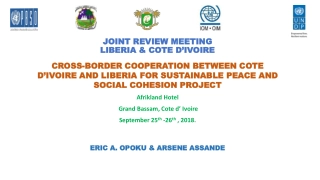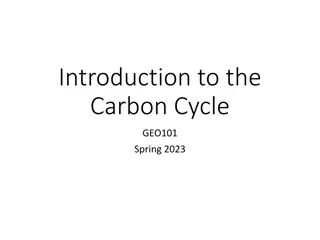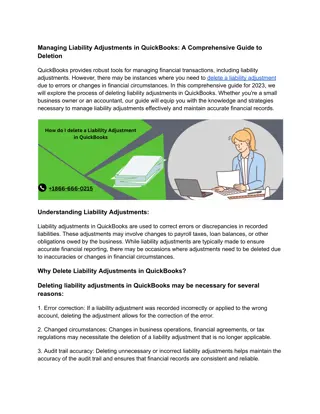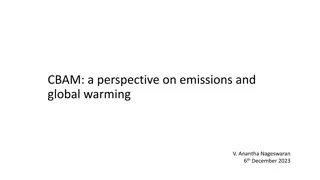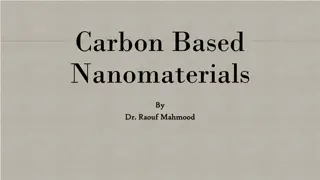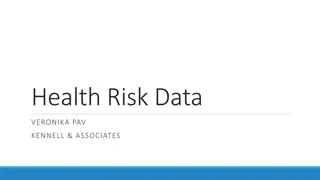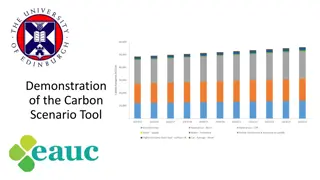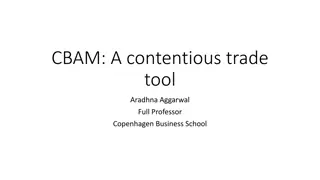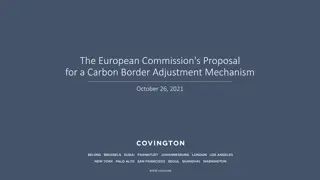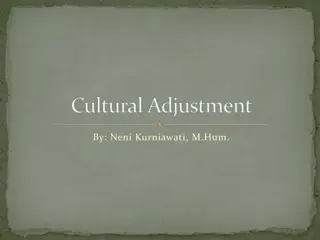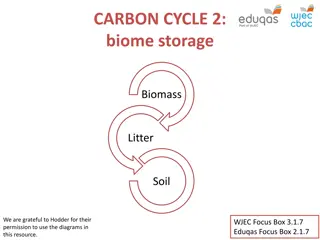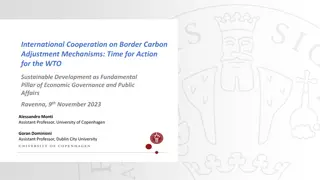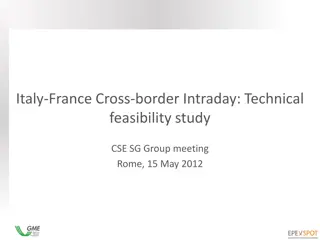Carbon Border Adjustment Mechanism (CBAM)
Get an overview of the EU's Carbon Border Adjustment Mechanism (CBAM), its global context, the need for its implementation, and the challenges faced during its design. Find out when it will come into force and the details of its adoption process.
Download Presentation

Please find below an Image/Link to download the presentation.
The content on the website is provided AS IS for your information and personal use only. It may not be sold, licensed, or shared on other websites without obtaining consent from the author.If you encounter any issues during the download, it is possible that the publisher has removed the file from their server.
You are allowed to download the files provided on this website for personal or commercial use, subject to the condition that they are used lawfully. All files are the property of their respective owners.
The content on the website is provided AS IS for your information and personal use only. It may not be sold, licensed, or shared on other websites without obtaining consent from the author.
E N D
Presentation Transcript
Carbon Border Adjustment Mechanism (CBAM) What is it about? When will it come into force? September 2023 Ministry of Finance, Sweden 1
EU Climate Policy Brief scene setter Ministry of Finance, Sweden 2
EU Aims at Climate Neutrality How to do it? EU Emissions Trading Scheme (ETS) Introduced in 2005 and developed stepwise over the years Cornerstone of the EU's policy to combat climate change approx. 40% of EU GHG emissions Covers large industrial and electricity plants Carbon leakage addressed via free allocation of emission allowances Sectors outside EU ETS Buildings, transport, small industries, agriculture approx. 60% of EU GHG emissions Member States national measures 8 Member States (e.g. Sweden) have national carbon taxes EU climate goals, decided in 2019 Political ambition is a legal obligation for the EU (EU Climate Law) First climate-neutral continent in 2050 Reduce carbon emissions by 55% in 2030 EU Green Deal, presented in 2019 Fit for 55 Package legislative proposals in 2021, such as Review of the EU ETS tightened, extended to other sectors Free allocation is phased out Prevent carbon leakage to ensure effectiveness of EU climate policy = CBAM is introduced CBAM is an essential part of EU Climate Policy, not a protectionist measure. Ministry of Finance, Sweden 3
CBAM Global context Ministry of Finance, Sweden 4
Why is There a Need for CBAM? Global climate challenge requires urgent action time for action is now! Paris Agreement; recent IPCC report EU raises its climate ambition Differences in climate ambition among EU s trading partners => CBAM prevents carbon leakage to ensure effectiveness of EU climate policy on the EU market Incentivise . 3rdcountry producers to reduce emissions 3rdcountries to adopt green policy frameworks Ministry of Finance, Sweden 5
CBAM or International Coordination? CBAM has a strict climate objective CBAM favours decarbonisation efforts in third countries Deduction of explicit carbon price paid in 3rdcountries from CBAM obligation Actual emissions methodology Countries linked to EU ETS will be excluded Possible international agreements on how to take account of carbon price CBAM does not preclude continued joint work on international coordination of carbon pricing Ministry of Finance, Sweden 6
CBAM EU legal adoption process Ministry of Finance, Sweden 7
When Will We Know All the Details? I CBAM Regulation major framework December 2022 Political agreement between EU co- legislators (https://data.consilium.europa.eu/doc/document/ST-16060-2022- INIT/en/pdf Spring 2023 Formal adoption by EU co-legislators 19 April European Parliament vote 25 April EU Council vote 10 May Formal signing ceremony by co-legislators 16 May Publication in OJ L 130/52 Publications Office (europa.eu) 1 October 2023: Transitional period starts - reporting 1 January 2026 : Definitive period starts financial obligation; EU imports only by authorized CBAM declarants Ministry of Finance, Sweden 8
When Will We Know All the Details? II Secondary legislation supplement framework Adopted by EU Commission based on empowerments in CBAM Regulation, prepared by CBAM Committee (Member States Representatives) and stakeholder views 12 implementing acts, to ensure detailed uniform application One on methods for reporting during transitional period; adopted 16 August 2023, link to implementing act; 11 others (sufficiently prior to 1 January 2026) 4 delegated acts reflect certain developments E.g. circumvention, adding countries to list of countries excluded from CBAM fulfilling certain criteria, such as linking to EU ETS Ministry of Finance, Sweden 9
CBAM Challenges when designing CBAM Ministry of Finance, Sweden 10
Specific considerations during EU deliberations .. Which sectors and which specific goods? Direct emissions as well as indirect emissions? Calculation method of actual emissions in line with EU ETS EU ETS installations vs CBAM goods WTO conformity Trajectory for phasing in of CBAM and phasing out of free allowances under the EU ETS Export carbon leakage Governance model 11 Ministry of Finance, Sweden
CBAM Regulation changes between EU Commission July 2021 proposal and Final Agreement between EU co-legislators) Major changes: Delay of entry into force to 1 October 2023. Some additional goods added to CBAM scope Indirect emissions in some goods added to financial CBAM obligation Some changes of pace of phase in of CBAM obligation Extended review clauses Small consignments of goods excluded (150 ) Governance more centralised tasks at EU Commission, less on national EU authorities Ministry of Finance, Sweden 12
CBAM A closer look at the design Ministry of Finance, Sweden 13
CBAM Design Key Elements Addressed to companies, not countries Based on actual verified carbon emissions embedded in imported goods Focus on goods in carbon intensive sectors A Regulation mirroring EU ETS carbon pricing to the extent possible Obligations on EU importers Not a tax; not a customs duty Climate objective Compliant with WTO and in line with international trade rules Photo: Maskot / Folio Ministry of Finance, Sweden 14
Goods in CBAM Scope General Basics Selected on basis of three criteria High risk of carbon leakage (high carbon emissions; high level of trade) Covering major part of carbon emissions under EU ETS Practical feasibility to calculate embedded emissions in goods First phase Goods within limited number of sectors Goods defined by CN codes Further stages, following review post 2025 Extending to other sectors under EU ETS Photo: Folio Images Ministry of Finance, Sweden 15
Goods in CBAM Scope Specific (Final Agreement) Goods in the following sectors: Iron & Steel, incl. some precursors Aluminium Cement Fertilisers Electricity Hydrogen Direct and indirect emissions: Transitional period 2023-2025, reporting on actual direct as well as indirect emissions Final period from 2026, declaring Electricity: By default values, possibility to show actual verified direct emissions For other goods, two groups of goods: Group 1: Actual verified direct emissions; alt. use of default values (incl. mark- ups) Group 2: Group 1 + indirect emissions (default values) Photo: Lars Thulin / John r Ministry of Finance, Sweden 16
Carbon Price, from 1 January 2026 Equal carbon pricing EU companies pay a carbon price via EU ETS on goods produced in the EU Importers pay a carbon price, corresponding to the EU ETS price The CBAM obligation only applies if EU ETS free allowances has been phased out Gradual phase in of CBAM obligation Mirroring the phase out of EU ETS free allowances COM proposal: 2026-2035 Linear 10% annual phase in Political agreement dec 2022: 2026-2034, but slower pace from start No double pricing An explicit carbon price paid in a 3rdcountry for the embedded emissions in imported goods will be deducted from the CBAM obligation Ministry of Finance, Sweden 17
How is Carbon Price Paid in 3rdCountry Determined? Explicit carbon price (Art. 3 (23) of CBAM Regulation) monetary amount paid in a third country, under a carbon emissions reduction scheme, either in the form of a tax, levy, fee or emission allowances under a greenhouse gas emissions trading system, calculated on greenhouse gases covered by such a measure, and released during the production of goods In line with WTO rules, mirrors EU carbon pricing Photo: Folio Images Ministry of Finance, Sweden 18
CBAM CBAM obligations on EU importers from 1 October 2023 vs from 1 January 2026 Ministry of Finance, Sweden 19
What Happens During the Transitional Period? (1 October 2023 31 December 2025) The Customs Declarant (the importer) reports embedded direct and indirect emissions CBAM goods imported to the EU from 1 October 2023 Report by each quarter; first report at latest by 31 January 2024 No verification of emissions Effective, proportionate and dissuasive penalty by national CBAM Authority on importer if not complying Methodology and criteria for penalty in implementing act Reports submitted to EU Commission via the transitional registry To gather data for forthcoming implementing acts for definitive period Learning by doing period for business Photo: Folio Images Ministry of Finance, Sweden 20
Obligations on Importers in Definitive Period I (from 1 January 2026) Goods can only be imported to the EU by an authorised CBAM declarant Importer has to be established in an EU Member State Authorisation by the CBAM Authority in the Member State of establishment, demonstrating financial and operational capacity Application possible from 31 December 2024 Yearly declaration of CBAM imports during previous calendar year By 31 May 2027 submit CBAM declaration for imports during 2026 Specifying embedded emissions according to laid down methodology, Ensuring that declared emissions are verified by an accredited verifier and include relevant verification reports Calculating CBAM certificates to be surrendered By 31 May surrender CBAM certificates covering declared emissions Reviews of declarations by EU Commission and CBAM Authorities; non-compliance results in penalties Photo: Thyra Brandt / Folio Ministry of Finance, Sweden 21
Obligations on Importers in Definitive Period II (from 1 January 2026) Purchase of CBAM certificates 1 CBAM certificate equals 1 ton of embedded emissions in goods Authorised CBAM declarants buy at common EU auction platform Price = average weekly price of EU ETS allowances Upon purchase, CBAM certificates are registered in account of authorised CBAM declarant in CBAM Registry No trading allowed between authorised CBAM declarants An authorised CBAM declarant must ensure CBAM certificates for 80% of embedded emissions in his account by end of each quarter Non-compliance may lead to revoking status of authorised CBAM declarant Limited possibility to re-sell surplus CBAM certificates to the EU COM. Ensure that an accredited verifier will verify the embedded emissions Use person accredited as EU ETS verifier, or A person may seek authorisation by an EU Accreditation Body as an CBAM verifier. Photo: Folio Images Ministry of Finance, Sweden 22
Role of a 3rdCountry Producers All legal CBAM obligations on the EU importer, not on 3rdcountry producer, but . The EU importer is obliged to give detailed info on embedded emissions in the imported goods Access to data from the 3rdcountry producers needed for imports from 1 October 2023; from 1 January 2026 these data verification by an accredited verifier. A 3rdcountry producer may register contact information and activity in EU CBAM Registry To facilitate contacts between importers and 3rd country producers; possible already from 1 Oct. 2023 The 3rdcountry producer shall ensure verification of embedded emissions. Photo: John r Images Ministry of Finance, Sweden 23
CBAM Questions? Contact information: Susanne kerfeldt Senior Adviser Tax and Customs Department Ministry of Finance, Sweden E-mail: susanne.akerfeldt@gov.se Phone: +46 8 405 1382 Oliver Sparrings Legal Adviser Tax and Customs Department Ministry of finance E-mail: oliver.sparrings@gov.se Phone: +46 8 405 3901 Photo: Folio Images Ministry of Finance, Sweden 24
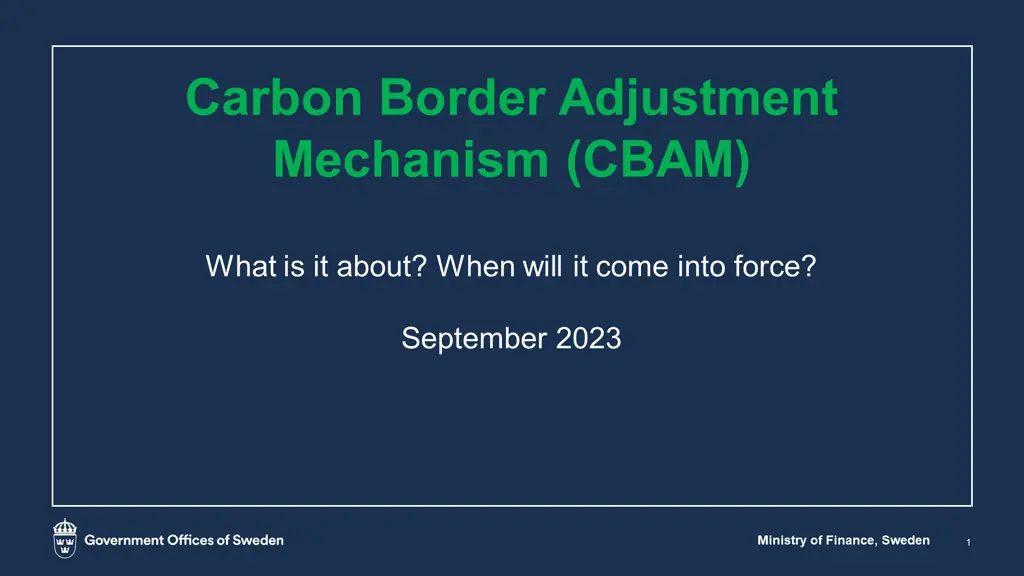
 undefined
undefined






